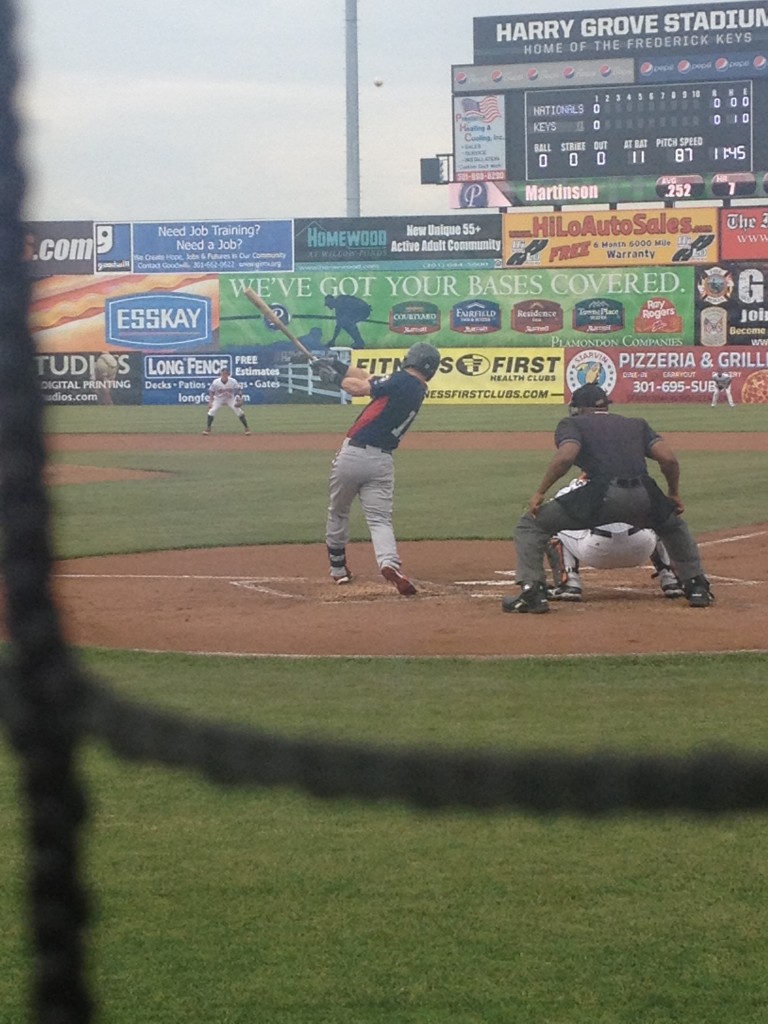Now that the MLB trade deadline is less than a month away, and the first major midseason trade occurred earlier this week between the Orioles and the Cubs, I figured that it is an opportune time to focus to how general manager Mike Rizzo will try to improve the roster in the upcoming weeks.
Last month I briefly examined a few of the more prominent names the Nationals might be interested in acquiring for the playoff chase. Building off that previous article, I thought it might be valuable to highlight some of the top trade chips the Nationals have that other teams will inquire about in trade discussions later this month. Today in Part 1, I examine a few hitters who should be at the top of other organization’s wish lists when general manager Mike Rizzo engages them in potential trades.
****
5) Zach Walters
Recently named to the International League All-Star game, Walters was impressive in spring training earlier this season and has continued his success during the year, batting .246/.275/.508 with 18 home runs and 20 doubles in 77 games for Triple-A Syracuse. A former 9th round pick of the Diamondbacks, Walters was acquired by the Nationals in the Jason Marquis trade in the summer of 2011. Scouts question if his defensive skills and inability to draw walks will allow him to be a starter in the majors, but a 23-year-old switch-hitting middle infielder with power will always intrigue general managers in trade discussions.
4) Danny Espinosa
After struggling early this season in Washington batting only .158/.193/.272, Espinosa was sent to the minor leagues to find his swing. Unfortunately the demotion has not sparked a fire under Espinosa, as he is currently batting .094/.169/.125 with 33 strikeouts in 64 at-bats at Triple-A Syracuse.
That said, the 26-year-old Espinosa has a track record of success at the major league level, the ability to play both shortstop and second base, and is under contract through 2016. A shrewd general manager will likely try to buy-low on Danny, in hopes a change of scenery and a new hitting coach helps him rediscover his previous form. I expect Espinosa will be frequently mentioned in trade talks, and I hope the Nationals fight any potential urge to sell low on this capable and talented young middle infielder.
3) Michael Taylor
One of the best pure athletes in the Nationals farm system, Michael Taylor is repeating High-A Potomac this season as a 22-year-old and has found his groove at the plate recently to bolster his batting line to .259/.332/.407 with 6 home runs and 28 stolen bases. A dynamic defender in center field, Taylor has the necessary speed and throwing arm to be an above-average major league defensive centerfielder with some thump in his bat. Questions exist amongst his detractors if he will ever make enough contact to reach the big leagues, but Taylor has the tools team’s covet and should be a popular name when opposing team’s scout the Nationals farm system.
2) Jason Martinson
Martinson, a 5th round pick of the Nationals in the 2010 draft, had a breakout year last season, batting .245/.340/.430 with 22 home runs, 106 runs batted in, and 30 stolen bases between Hagerstown and Potomac. Martinson returned to High-A to begin this season and has continued to hit, batting .268/.379/.484 with 12 home runs and 15 stolen bases before forcing the Nationals to promote him to Double-A Harrisburg about ten days ago.
A former college football player, Martinson has a strong, athletic build, reasonably good speed, and a strong throwing arm, meaning with some further refinement he should be able to play shortstop defensively in the majors. An asset on the bases with good power for a middle infielder, Martinson must improve his approach and make more contact at the plate, as evidenced by his 88 strikeouts in 268 at-bats this season, if he hopes to realize his immense potential. Considering Ian Desmond, Danny Espinosa, and Zach Walters are ahead of Martinson at shortstop in the organization, expect the 24-year-old Martinson to receive plenty of attention this month.
1) Brian Goodwin
Drafted by the Nationals in the supplemental 1st round (34th overall) in 2011, Goodwin has moved quickly through the minor league system, reaching Double-A by the end of 2012. The Nationals decided to have him return to Harrisburg for 2013, and Goodwin has performed reasonably well, hitting .256/.353/.403 with 7 home runs and 16 stolen bases. On the other hand, Goodwin still needs development time in the minor leagues to improve defensively, and reduce his tendency to swing-and-miss, as he has struck out 84 times in 313 at-bats this season.
While his weaknesses are rather obvious, with more refinement the 22-year-old Goodwin has the potential to develop into an above-average offensive and defensive centerfielder. With starter Denard Span under contract through 2015, the Nationals might be tempted to part with Goodwin in the right deal. Unless the return is enormous, here’s hoping the Nationals ignore the numerous pleas from opposing general managers trying to acquire this potential first-division starter.


